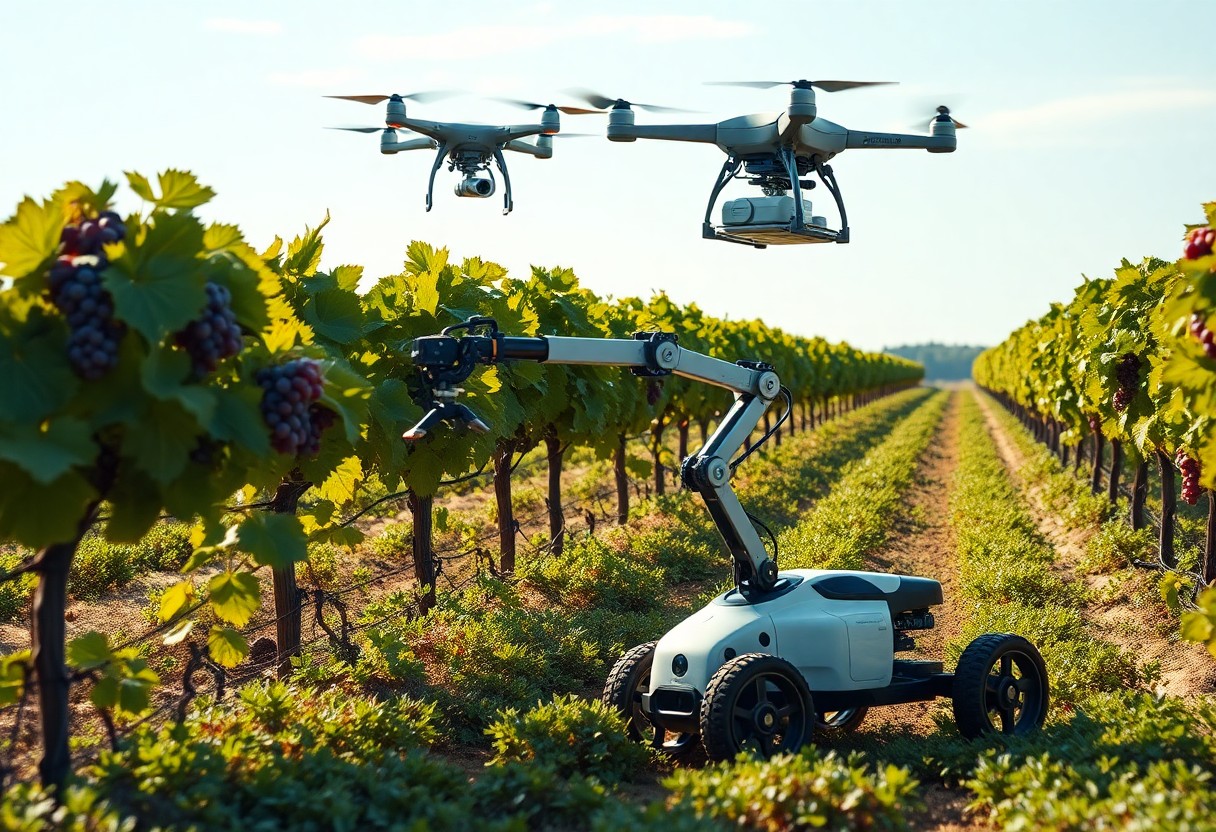There’s a growing interest in leveraging asynchronous systems to boost the efficiency of robotic applications. By enabling different components to operate independently and simultaneously, these systems offer significant advantages in speed and flexibility. You may find that asynchronous processes allow your robots to better adapt to varying workloads and improve overall productivity. This blog post will explore how asynchronous systems work and the specific benefits they provide to enhance your robotic operations.
Understanding Asynchronous Systems
To fully appreciate the role of asynchronous systems in robotics, you need to understand their architecture and operation. Unlike synchronous systems that rely on a shared clock signal to regulate their processes, asynchronous systems operate independently, allowing components to function at their own pace. This enhances responsiveness and flexibility, making them particularly valuable in complex robotic applications.
Definition and Characteristics
Behind asynchronous systems lies the ability to perform tasks without waiting for a central clock to coordinate actions. Key characteristics include non-blocking communications, event-driven processing, and the capability to handle multiple operations concurrently. This structure naturally aligns with the dynamic requirements of robotic functions, making it a preferred choice in many applications.
Comparison with Synchronous Systems
Behind a comparison of asynchronous systems with synchronous systems, you will find stark differences that affect performance and efficiency. Here’s a look at their distinct features:
| Feature | Asynchronous Systems | Synchronous Systems |
|---|---|---|
| Coordination | Independent operation | Central clock-driven |
| Flexibility | Highly flexible | Less flexible |
| Efficiency | Optimal resource use | Potential underutilization |
Also, when considering the efficiency of robotic systems, asynchronous designs offer notable advantages over their synchronous counterparts. For instance, while synchronous systems may face delays due to the need for all components to be aligned with a central clock, asynchronous systems allow for instantaneous reactions to stimuli. This leads to quicker decision-making processes and a more fluid performance, which is imperative in dynamic environments where adaptability is key. Below is a breakdown of these advantages:
| Advantage | Benefit |
|---|---|
| Reduced Latency | Faster response times to events |
| Increased Scalability | Better handling of complex tasks |
| Energy Efficiency | Lower power consumption during idle times |
Benefits of Asynchronous Systems in Robotics
Assuming you integrate asynchronous systems into your robotic applications, you will find that they significantly enhance performance and operational efficiency. These systems facilitate seamless communication among various components, allowing robots to perform multiple tasks simultaneously without bottlenecks. This increased efficiency not only improves task execution but also extends operational lifespan, ultimately leading to better overall outcomes in your robotic projects.
Improved Task Management
About asynchronous systems in robotics, they allow for superior task management by enabling your robots to prioritize tasks based on urgency and resources. This flexibility enhances your ability to handle complex workflows, allocating resources more effectively and reducing idle times for vital components.
Enhanced Scalability and Flexibility
At the core of asynchronous systems lies their ability to scale and adapt to your changing needs. By decoupling tasks, these systems empower you to integrate additional robots or components without disrupting existing functions, thus ensuring smooth operations as your demands evolve.
Plus, with enhanced scalability, you can easily ramp up operations by adding more units to your robotic fleet or implementing more complex algorithms as your projects grow. This adaptability allows you to respond swiftly to new challenges, optimize resources, and explore innovative solutions without significant overhauls. It equips you with the agility necessary for modern robotic deployment, ensuring that you can meet both present and future demands in a competitive landscape.
Real-World Applications of Asynchronous Robotics
Some of the most innovative uses of asynchronous systems in robotics can be found across various industries, showcasing their potential to enhance efficiency and productivity. These applications include everything from automated manufacturing lines to advanced autonomous vehicles, demonstrating the versatility of asynchronous technologies in both industrial and consumer domains.
Industrial Automation
Asynchronous systems play a vital role in industrial automation by allowing robots to operate independently and adaptively. This flexibility enables your manufacturing processes to run smoothly, as the robots can coordinate tasks without being held back by synchronous timing constraints. Ultimately, this leads to increased output, reduced downtime, and improved overall efficiency in your operations.
Autonomous Vehicles
Around the world, autonomous vehicles utilize asynchronous systems to optimize navigation and decision-making. By processing data independently and in real-time, these vehicles can react to their environments more swiftly, enhancing safety and efficiency on the road. This technology allows your autonomous vehicle to operate seamlessly in complex traffic scenarios.
Applications for autonomous vehicles are continually expanding, with uses in passenger transportation, delivery services, and even public transit. By harnessing asynchronous robotics, these vehicles can manage changing road conditions, avoid obstacles, and communicate with other vehicles and infrastructure, significantly enhancing their operational capabilities. As you explore this technology, you’ll gain insights into how it can revolutionize transportation and ease daily commuting challenges.
Challenges in Implementing Asynchronous Systems
Keep in mind that while asynchronous systems offer numerous benefits, they also introduce particular challenges that can impede their effectiveness. These include coordination among multiple processes, ensuring seamless communication, and maintaining system integrity during operational shifts. Understanding these challenges will equip you with the insights needed to navigate potential pitfalls during implementation.
Coordination and Communication Issues
Challenges arise in achieving effective coordination and communication among the various components in an asynchronous system. As tasks execute independently, synchronization can become a significant hurdle, leading to potential data consistency issues and increased complexity in managing workflows. Addressing these obstacles is key to harnessing the full potential of your robotic efficiency.
Debugging and Monitoring Difficulties
On the technical side, debugging and monitoring asynchronous systems can be quite challenging. The non-linear nature of these systems makes it difficult to trace the flow of operations and identify where problems originate.
With asynchronous operations happening simultaneously, tracking down bugs can feel like finding a needle in a haystack. Specific monitoring tools may not provide sufficient visibility into each component’s status, thereby complicating your ability to diagnose and correct faults swiftly. A thorough understanding of your system architecture and the implementation of robust logging practices can help simplify the debugging process and enhance system reliability. Being proactive in your approach to monitoring will equip you to handle these technical difficulties more effectively.
Future Trends in Asynchronous Robotics
For those looking to the future, asynchronous robotics will play a transformative role in various sectors, leading to heightened efficiency and adaptability. As robots continue to evolve, the integration of advanced communication protocols and innovations in processing capabilities will empower them to handle complex tasks better, reducing operational downtime and increasing productivity in real-time.
Integration with AI and Machine Learning
Around the globe, developers are focusing on integrating artificial intelligence and machine learning algorithms into asynchronous systems. This collaboration will enable robots to learn from their environments, improve decision-making, and adapt to changing conditions autonomously. As a result, your operations can benefit from enhanced accuracy and reduced human intervention.
Advancements in Networking Technologies
The rise of next-generation networking technologies promises to revolutionize the way asynchronous robots communicate and operate. With improved bandwidth, reduced latency, and increased connectivity, these advancements will ensure seamless data exchange among multiple robotic units. This interconnectedness is set to enhance collaborative operations, allowing robots to work alongside each other efficiently.
Indeed, the growth of 5G technology and edge computing will further propel asynchronous robotics to new heights. With faster data transmission and the ability to process information closer to the source, your robotic systems will benefit from real-time responsiveness. This means that robots can dynamically adapt to their environments, share insights quickly, and execute tasks with unprecedented efficiency, leading to major improvements in operational workflows.
Summing up
Following this exploration, it’s clear that incorporating asynchronous systems into your robotic applications can significantly boost efficiency. By enabling tasks to run independently, you can optimize resource allocation and reduce latency in processing. This allows your robots to operate more fluidly in dynamic environments, improving response times and overall performance. Ultimately, embracing asynchronous design principles empowers you to create more capable and adaptable robotic systems, enhancing their functionality and effectiveness in a variety of applications.






